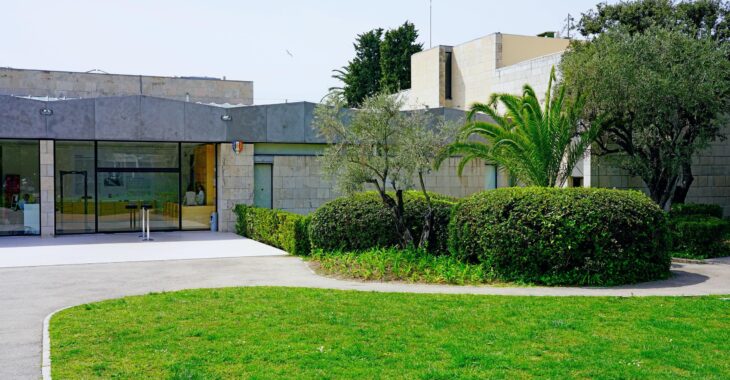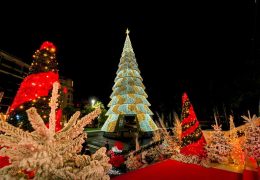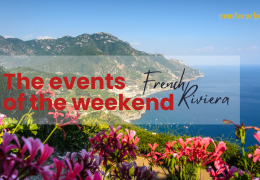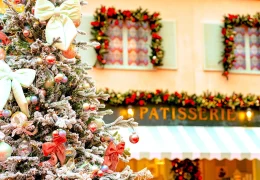National Marc Chagall Museum: Four exceptional works enter the museum!

In 2023, on the occasion of the fiftieth anniversary of the Marc Chagall National Museum, the museum managed to exceptionally acquire four notable works by the artist: “The Mexican Rider in Red and His Purple Horse,” 1943; “Descent from the Cross on Blue Background,” 1950; “The Violinist,” 1957; “Elijah’s Chariot, Maquette for the Mosaic of the Marc Chagall National Museum,” 1970.
These works, of great rarity, complement the museum’s collection, initially constituted by Chagall, with the 560 works that make up the donations of the Biblical Message in 1966 and 1972. The collection now comprises nearly 1000 pieces, making it one of the most important public collections of Chagall’s works in the world.
The collections are enriched by following the market, with prices that can reach very high costs. Consequently, the museum conducts constant monitoring at French and international public sales, but also among collectors, with the support of the Association of Friends of the museum.
CONFERENCES
Tuesday, April 9, 2024, at 7:00 PM
MICHEL PASTOUREAU
Pink: History of an Uncertain Color
Michel Pastoureau was born in 1947 in Paris, where he grew up immersed in the culture of the surrealists, of which his father was a part. Passionate about history and Latin, he studied at the École Nationale des Chartes. He defended a thesis on heraldic bestiaries in the Middle Ages. Historian, paleographer archivist, he was a curator at the Bibliothèque Nationale (1972-1983), at the Cabinet des Médailles (1975-1983), and director of studies at the École Pratique des Hautes Études (EPHE), where since 1983 he has held the chair of Western symbolic history. He is a member of the International Academy of Heraldry, president of the French Society of Heraldry and Sigillography (2008-2017), and regularly teaches at the École du Louvre.
Michel Pastoureau has published around forty books, some of which have been translated into several languages, and since 2000, they have been devoted to the history of colors, animals, and symbols in Europe, from Antiquity to the present day. In 2010, he received the Médicis Prize for The Colors of Our Memories. His main books on the subject are History of a Color: Blue (2000), Black (2008), Green (2013), Red (2016), and Yellow (2019).
Auditorium of the Marc Chagall National Museum
Free admission subject to availability of seats.
Tuesday, April 16, 2024, at 7:00 PM
ELSA DORLIN
Representing Violence
The content of this conference will be communicated shortly.
Elsa Dorlin is a philosopher; since 2021, she has been a professor of contemporary political philosophy at the Department of Philosophy at the University of Toulouse Jean Jaurès and co-director of the ERRAPHIS research team. In 2004, she defended her philosophy thesis, “At the Bedside of the Nation: Sex, Race, and Medicine: XVII-XIX Century,” at the University Paris-Sorbonne. From 2005 to 2011, she was a lecturer in the philosophy of history and history of sciences at the UFR of philosophy at the University Panthéon-Sorbonne.
This meeting is co-organized in collaboration with Villa Arson, Nice.
https://32e5h.r.a.d.sendibm1.com/mk/cl/f/sh/1t6Af4OiGsEag5ui0o576C3koKu03t/35YXhDdyIG_2
This conference series is a co-production of UCArts – Culture Directorate of the University Côte d’Azur and the national museums of the 20th century of the Maritime Alps. The six conferences are organized in collaboration with the Association of Friends of the Marc Chagall National Museum.
The program was developed by the museum in collaboration with Josiane Rieu, professor of French literature of the 16th century at the University Côte d’Azur and member of CTEL, the Transdisciplinary Center of Epistemology of Literature and Performing Arts.
https://32e5h.r.a.d.sendibm1.com/mk/cl/f/sh/1t6Af4OiGsF30o78PAB2GS7aC9sjlx/pehakp4kLoUi
UPCOMING EXHIBITION…
Chagall Political: The Cry of Freedom
From June 1 to September 16, 2024
The Marc Chagall National Museum (Nice), the Fundación MAPFRE (Madrid), and La Piscine – André Diligent Museum of Art and Industry (Roubaix), have joined Ambre Gauthier and Meret Meyer, exhibition curators, to organize a major retrospective that will present the artist’s work in light of the historical events of which he was a witness.
This is the first complete reading of his work from the perspective of his positions and his socio-political commitment on a humanistic scale, supported by a wide range of previously unrevealed documents, selected from the artist’s archives and chosen in the context of recent research.
Throughout his life marked by pogroms, two wars, a revolution, emigration, and exile, Marc Chagall created a deeply rooted work in the history of the 20th century. As a figure of displacement and migration, like the characters he depicts in his work, the artist wandered the world, buffeted by the great storms of the century, from his childhood in White Russia to France, from Germany to Palestine, or from the United States to Mexico, before settling in the Mediterranean.
His art, imbued with deep humanism and profoundly nourished by his Jewish roots and listening to the encountered cultures and lived experiences, becomes the messenger of an unwavering commitment to man and his rights, to equality and tolerance among beings. Supported by a great cry for freedom, his art confronts the eye with wars and artistic battles fought, transcending through poetic and imaginative power, the power of ridicule and humor.



















